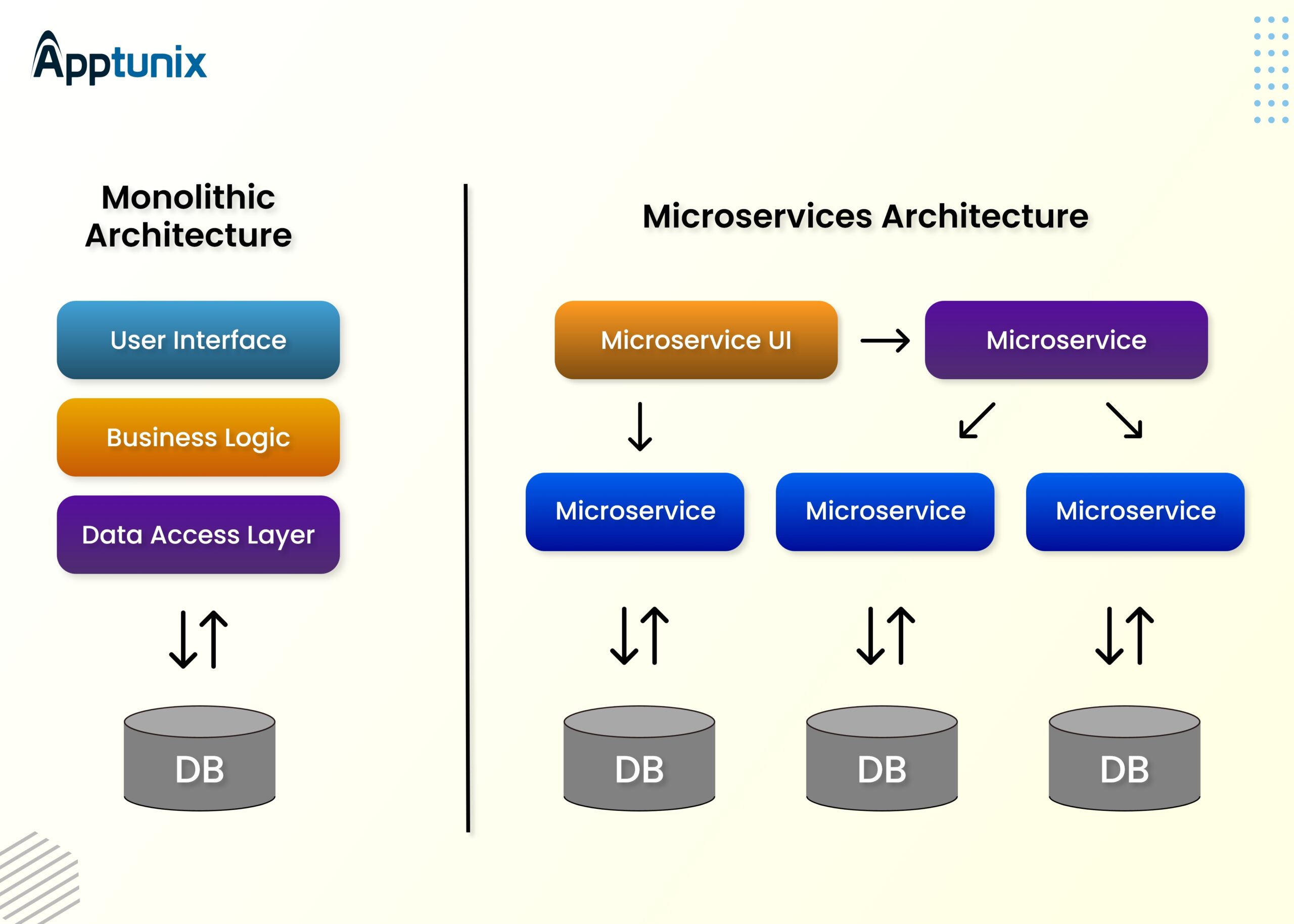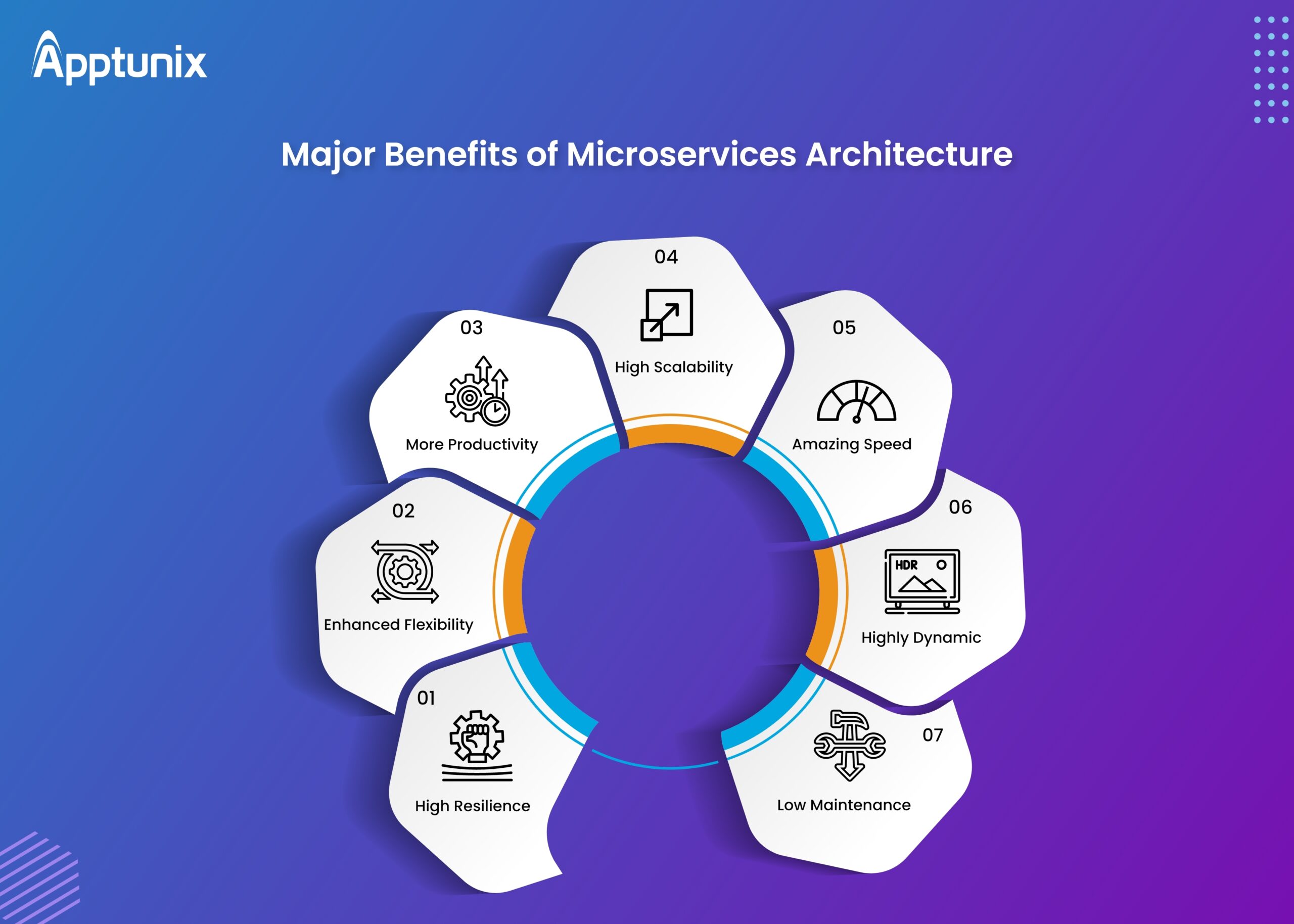Don't miss the chance to work with top 1% of developers.
Sign Up Now and Get FREE CTO-level Consultation.
Confused about your business model?
Request a FREE Business Plan.
The Growing Trend of Microservices Architecture in Mobile App Development
Table of contents

Needless to say, smartphones have made a solid splash worldwide. The next trend can be the proliferation of mobile apps. If we go with the recent survey, mobile apps can generate 526,259 million USD in revenue in 2023 alone?
Moreover, if we take the example of millennials, about 21% of them like to open an app more than 50 times a day. In addition to this, about 49% of people like to open an app more than 11 times a day.
Whatever it is, one thing is confirmed, businesses from around the world are launching new apps at an unprecedented pace. This has transformed the way apps are developed and disseminated.
There comes the microservices architecture that is becoming increasingly popular while creating software apps by mobile app development company. Needless to say, this architecture has earned mass popularity within a short time. And why not so, when it has many advantages, such as higher fault tolerance, better scalability, and increased flexibility?
Well, if you are eager to find out how microservices architecture can take the development of complex mobile apps to the next level, this blog is for you. It will take you on a journey where you will get to know the fundamental idea behind microservices architecture and how it can be used to create state-of-the-art apps.
Let’s begin!
Getting into the Nitty-Gritty of Microservices Architecture
Microservices design includes dividing an app into smaller, independent services that may be created, deployed, and scaled separately instead of creating monolithic apps. In simple words, microservices architecture is the creation of discrete parts of the apps instead of a single one.
The idea behind this architecture is to combine the separate parts for attaining a single outcome. Here each component is deployed separately that carries its own process. This is beneficial especially when it comes to large-scale app development as components are independent of each other and can be changed easily without affecting others.

Top 7 Benefits of Microservices Architecture in Mobile App Development
Well, when it comes to the benefits of building mobile apps based on microservices architecture, they are numerous. We will be covering the major benefits that make them a preferable choice over the app based on monolithic architecture.

1.High Resilience
As every component in microservices architectures is isolated from each other, this offers solid resilience, especially during updates. It means, in case a component fails to work, there will always be an option to use another without any downtime. Moreover, there will not be any requirement to change the entire app in order to correct that one defunct component.
2.Enhanced Flexibility
When it comes to microservices architecture implementation, you are required to go with the right tools for the right tasks. It is easy to develop components using the programming language or framework meant for it.
Moreover, the discrete components can easily work with each other without any glitches. If we talk about monolithic apps, this type of agility is not possible.

3.More Productivity
It is easy to understand components in mobile apps built using a microservices architecture. Even if we have to decipher the tiniest piece of functionality, we can easily do so. This makes it much more convenient for an organization to expand its team of developers based on their skill sets. This will prevent an entire team from getting involved in understanding a complex monolithic app.
4.High Scalability
The good thing about apps based on microservices architecture is their discrete components that can be scaled up or down as per specific requirements. In addition to this, if the app has to work across diverse platforms and devices, scalability is something that can make things easier. And this is where the resilience of the isolated components plays its role.
5.Amazing Speed
The one thing that makes the microservices architecture superior to the monolithic, is the independence of the components in the app. This is beneficial especially when we have to add, delete, or modify features of an app without altering the codebase.
All you need to do is to change the specific components as per the requirement and then test and deploy them separately without affecting the normal functioning of an app. This means, there will be no downtime and you can easily implement the changes without any delay.
6.Highly Dynamic
Needless to say, technology is changing at a rapid pace. In this scenario, it’s hard to develop an app based on the device the app will run on. This is where microservices architecture becomes handy. It offers developers the liberty to make quick and stable upgrades as per the need of the hour and without bringing the app to a standstill.
7.Low Maintenance
The good thing about small and discrete components is their ease of debugging and maintenance. They demand less time when it comes to implementing changes. This not only reduces labor but cost too. In addition to this, when it comes to detecting and fixing errors, you need not work on the whole app but on a specific component only.
How Apptunix Can Help You Switch to Microservices Architecture?
Microservices Architecture is becoming increasingly popular these days. And why not so when it offers speed, scalability, and dependability in a single app without affecting the overall performance?
Apptunix is a top mobile app development company that carries immense experience in building apps based on microservices architecture. Our team of experts can sort out your specific business requirement and provide you with a robust product on the promised date.

Frequently Asked Questions(FAQs)
Q 1.Why Choose Microservices Architecture?
The prime reason to go with microservices is its ability to scale each service independently in order to meet the demand for the app feature it supports.
Q 2.What is the Cost to Develop a Mobile App Based on the Microservices Architecture?
Well, the cost to develop microservices apps depends upon the specific business requirement as well as on several parameters like the location of the agency, features you want to add, and so on. For clear-cut estimation, you can talk to our expert.
Q 3.What are the Major Benefits of Microservices Architecture in Mobile App Development?
Here are some advantages of going with Microservices Architecture
- Improved agility & productivity
- Accelerated velocity & scalability
- Low maintenance requirement
- Ease in app deployment
- Improves fault isolation
Q 4.What are the Challenges of Microservices Architecture?
Some of the major challenges in implementing Microservices Architecture are
- Overcoming design complexity
- Attaining data consistency
- Testing and monitoring requirements
- Security compromisation
- Operational complexity
- Inter-Service communication issues
Rate this article!
Join 60,000+ Subscribers
Get the weekly updates on the newest brand stories, business models and technology right in your inbox.

With about 7 years of experience (Technical & SEO Writing) and a solid technical background (Master of Technology – E.C.E with Wireless Communication as specialization), he has worked both as a freelancer and on a regular basis for prestigious IT organizations across the globe. Whether it’s Blockchain, Metaverse, Artificial Intelligence (AI) & Neural Networks, Machine Learning (ML), Internet of Things (IoT), Cyber Security, Cloud Computing, 5G Technology, or some other trending technologies he has written whitepapers, eGuides, blogs, technical documentation, guest posts, and so on for almost all. Here at Apptunix, he is generating B2B content.

Telemedicine 2.0 - A Comprehensive Guide On What Healthcare Providers Need To Know?
Discover how the latest advancements like Artificial Intelligence in telemedicine are reshaping patient care. This comprehensive resource offers insights into the key trends and innovations driving this shift, providing valuable knowledge for healthcare professionals looking to stay ahead.
Download Now!Take the First Step
Towards Success!
Master app development with a
30-day FREE trial of our premium
solutions.


















